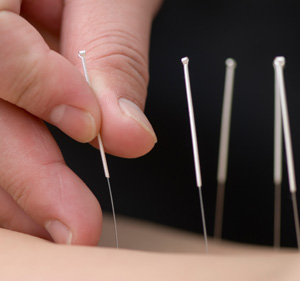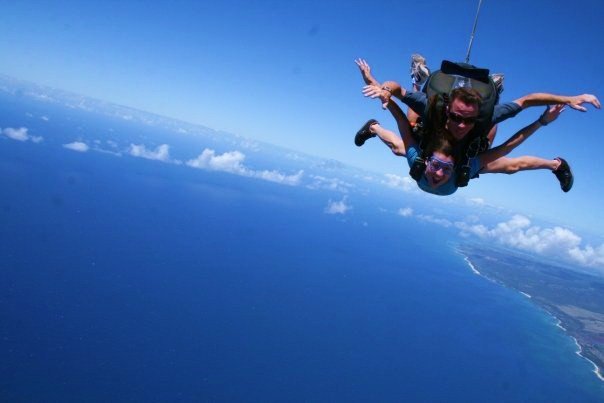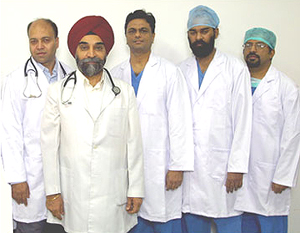Staying healthy while traveling and living abroad doesn’t have to be just about western medical practices. While visiting different regions of the world, you may encounter local practices that you feel provide different or better results. Here are five treatments that you may get an opportunity to try out:
Developed in China around 200 BCE, acupuncture is a method of healing that utilizes thin needles inserted into the skin at precise points in order to redirect the flow of energy throughout the body. Treatments are generally much more relaxing than they would appear from the pincushion appearance that they take on. Today acupuncture has a wide following around the world, but if you want to try it closer to its origins you may be interested in seeking treatment in China and its neighboring countries. Acupuncture sessions are almost universally regarded as safe and free of side effects, and many swear by the results that can be gained in treating any variety of ailments.
2. Yoga and meditation retreats
These South Asian practices stem from ancient religious rituals and attempts at reaching enlightenment through purity of body and mind. While both are pursuits that take a lifetime to master, many backpackers broaden their horizons and cleanse themselves by taking short courses. These can now be found around the world and range from casual weekend seminars to ten day or longer vipassana retreats, which call for absolute silence throughout the duration. These retreats are wildly popular, but their quality may vary. Get recommendations from other travelers before signing up for one to see how it stacks up.
3. Traditional African medicine
In almost every African nation there are far more traditional medical practitioners than doctors of western medicine. Their practices generally involve diagnosis through spiritual means of determining in which way the patient is unbalanced within his or her society or environment, resulting in sickness. Treatment may take a variety of forms, including medicinal herbs, spiritual ceremonies and incantations, bloodletting, and rudimentary surgeries. I’m not recommending it, per se, but you might just find that this is the right process for you.
4. Japanese Kampo
In Japan, herbal remedies are treated as regulated medicines in the same way pharmaceuticals are—standardized, subject to health laws, and tested extensively for safety. They are expected to meet rigorous standards, are integrated into the national health system and widely used. Kampo, the traditional art of healing through herbs, is widely accepted today. Many visitors are impressed by the efficacy of such treatment.
5. Native American Shaminism
The diverse cultures of North, Central, and South American native tribes all include shamanistic healing as an important part of their belief system. Though practices vary widely depending on geographic area and idiosyncrasies of a given tribe, most include figures that have been referred to as healers and medicine men/women. From Navajo crystal healing to Mapuche herbs to powerfully hallucinogenic brews of Ayahuasca in the Amazon, there are a variety of traditional medicines still used today.
Whether you choose to engage in any of these alternative therapies or not, they do offer a view into traditional cultures. One of the best parts of international travel is learning from cultures distinct from your own. Medicine is one of a million different ways to observe these differences.
Staying healthy while traveling and living abroad doesn’t have to be just about western medical practices. While visiting different regions of the world, you may encounter local practices that you feel provide different or better results. Here are five treatments that you may get an opportunity to try out:
1. Acupuncture
Developed in China around 200 BCE, acupuncture is a method of healing that utilizes thin needles inserted into the skin at precise points in order to redirect the flow of energy throughout the body. Treatments are generally much more relaxing than they would appear from the pincushion appearance that they take on. Today acupuncture has a wide following around the world, but if you want to try it closer to its origins you may be interested in seeking treatment in China and its neighboring countries. Acupuncture sessions are almost universally regarded as safe and free of side effects, and many swear by the results that can be gained in treating any variety of ailments.
 2. Yoga and meditation retreats
2. Yoga and meditation retreats
These South Asian practices stem from ancient religious rituals and attempts at reaching enlightenment through purity of body and mind. While both are pursuits that take a lifetime to master, many backpackers broaden their horizons and cleanse themselves by taking short courses. These can now be found around the world and range from casual weekend seminars to ten day or longer vipassana retreats, which call for absolute silence throughout the duration. These retreats are wildly popular, but their quality may vary. Get recommendations from other travelers before signing up for one to see how it stacks up.
3. Traditional African medicine
In almost every African nation there are far more traditional medical practitioners than doctors of western medicine. Their practices generally involve diagnosis through spiritual means of determining in which way the patient is unbalanced within his or her society or environment, resulting in sickness. Treatment may take a variety of forms, including medicinal herbs, spiritual ceremonies and incantations, bloodletting, and rudimentary surgeries. I’m not recommending it, per se, but you might just find that this is the right process for you.
4. Japanese Kampo
In Japan, herbal remedies are treated as regulated medicines in the same way pharmaceuticals are—standardized, subject to health laws, and tested extensively for safety. They are expected to meet rigorous standards, are integrated into the national health system and widely used. Kampo, the traditional art of healing through herbs, is widely accepted today. Many visitors are impressed by the efficacy of such treatment.
The diverse cultures of North, Central, and South American native tribes all include shamanistic healing as an important part of their belief system. Though practices vary widely depending on geographic area and idiosyncrasies of a given tribe, most include figures that have been referred to as healers and medicine men/women. From Navajo crystal healing to Mapuche herbs to powerfully hallucinogenic brews of Ayahuasca in the Amazon, there are a variety of traditional medicines still used today.
Whether you choose to engage in any of these alternative therapies or not, they do offer a view into traditional cultures. One of the best parts of international travel is learning from cultures distinct from your own. Medicine is one of a million different ways to observe these differences.







